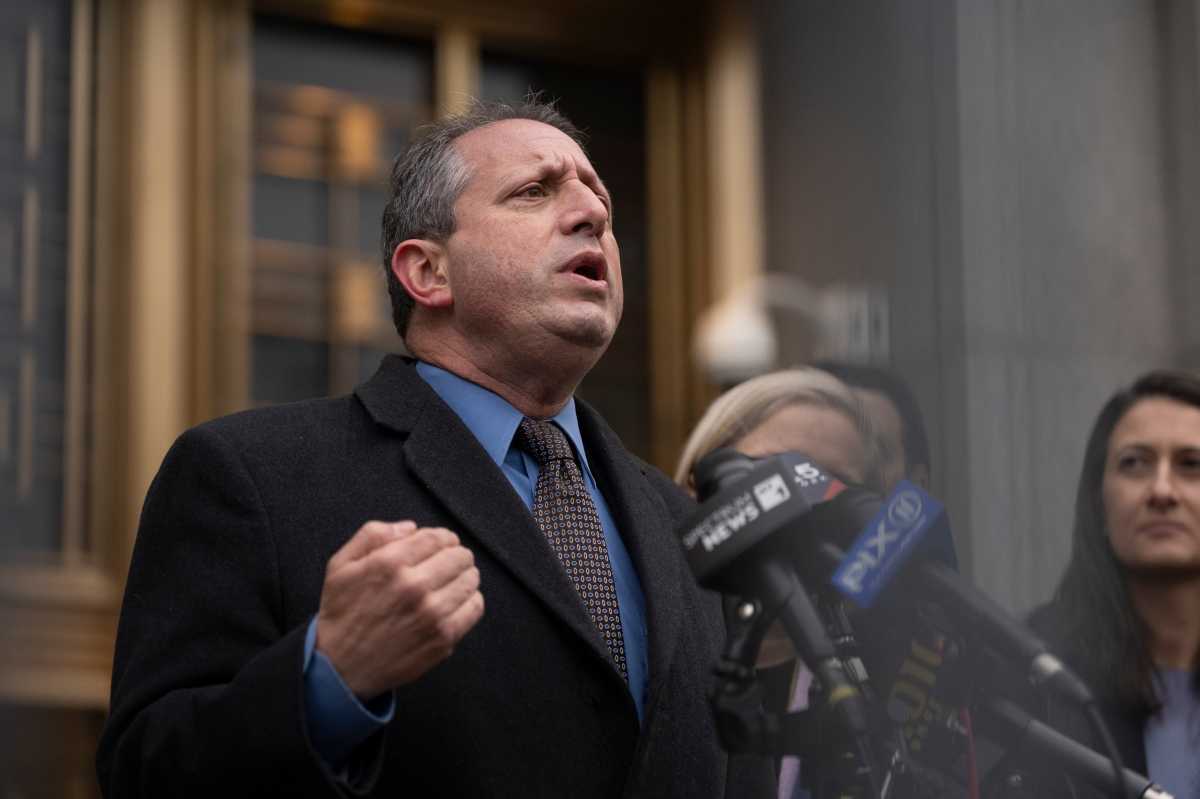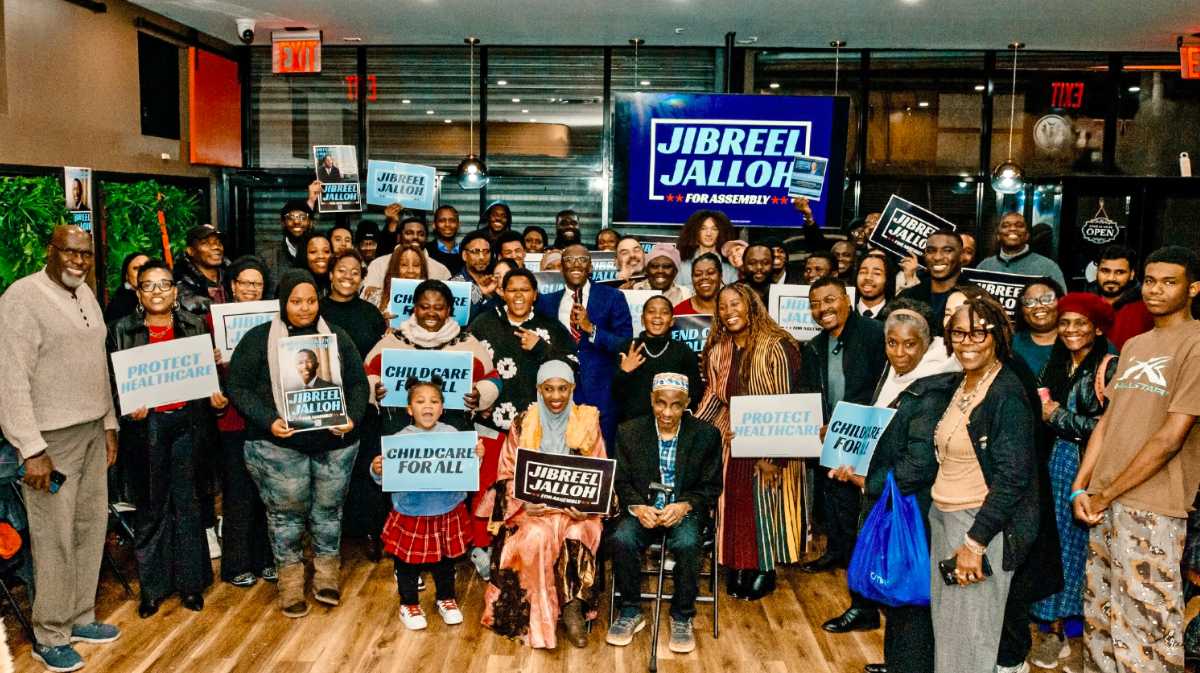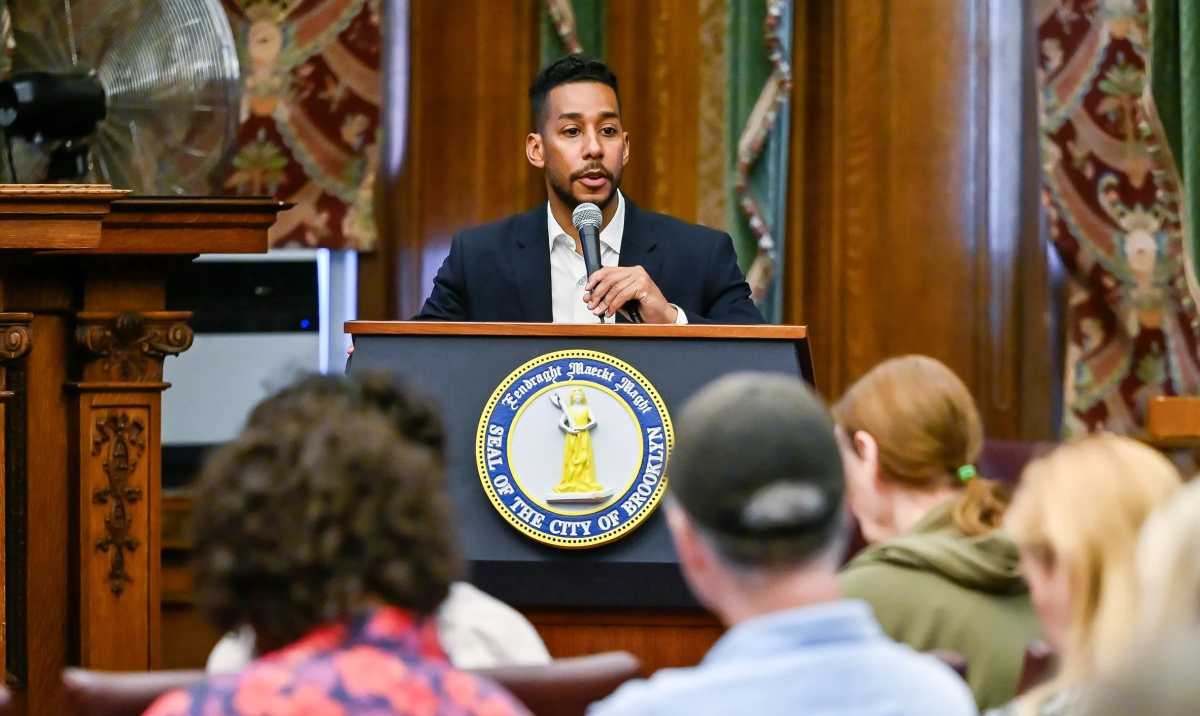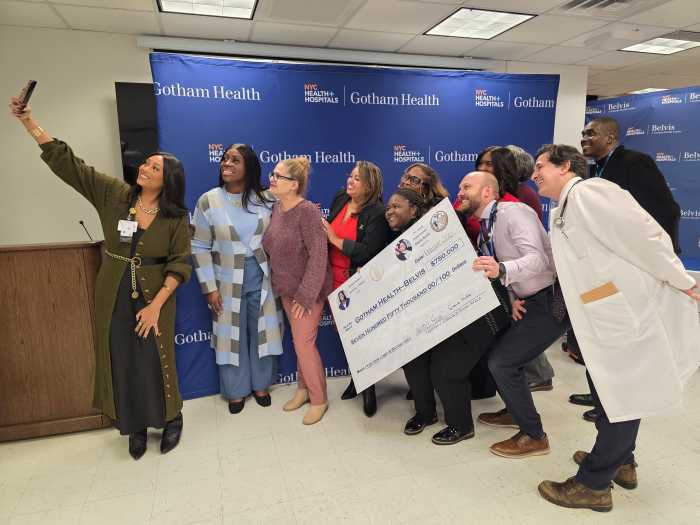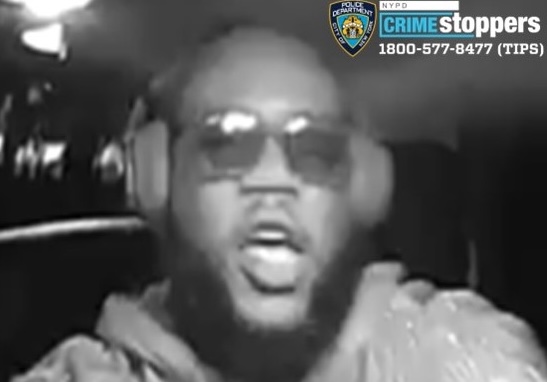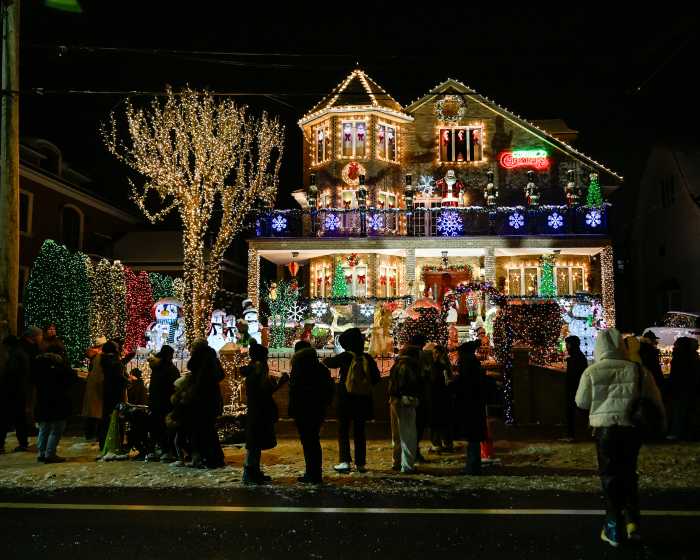Mayor Bill de Blasio and Governor Andrew Cuomo today released a joint plan to fund the crumbling and outdated Metropolitan Transit Authority that includes raising money through a congestion pricing plan for outer borough motorists to drive in some parts of Manhattan, and giving some of the tax revenue from the expected legalization of marijuana to the MTA.
But a number of Brooklyn lawmakers wasted little time in criticizing some parts of the ten-point plan.
Under the plan, the electronic tolling devices would be installed on the perimeter of the Central Business District (CBD) defined as streets south of 61st St. in Manhattan. The FDR Drive will not be included in the Central Business District. The electronic tolling system will account for tolls previously paid by drivers entering Manhattan from designated crossings.
The tolls would be variable providing discounts for off-peak hour travel. Emergency vehicles will be exempt from congestion pricing tolls. Other exemptions or discounts will be provided to a limited group of vehicles entering the CBD including vehicles operated by or transporting people with disabilities and individuals who have an identifiable hardship or limited ability to access medical facilities in the CBD.
Congestion pricing tolls would be supplemented with state and city revenue from a fixed amount of the new internet sales tax derived from sales in New York City, with a growth factor, and a percentage of the state and city revenue from the cannabis excise tax.
The congestion pricing revenue and these two taxes will be placed in a ‘lockbox’ to provide a funding source necessary to ensure the capital needs of the MTA can be met, with priority given to the subway system, new signaling, new subway cars, track and car repair, accessibility, buses and bus system improvements and further investments in expanding transit availability to areas in the outer boroughs that have limited mass transit options.
Tolls will be set once the electronic infrastructure is in place and a Capital Plan is finalized but will in no event be set later than December 2020.

Among the lawmakers critical of the plan includes City Council Member Alan Maisel (D-Bergen Beach, Canarsie, Flatlands, Georgetown, Gerritsen Beach, Marine Park, Mill Basin, Mill Island, Sheepshead Bay), who represents a district, which he describes as a transportation desert.
“For me it’s not a a congestion pricing issue, it’s a pricing issue. This has nothing to do with congestion. All the advocates want is to fund the subway,” said Maisel, who called the congestion pricing plan a tax on Chevy owners that will not affect the wealthy Lexus and limousine owners that will be able to pay the fee.
Maisel said motorists are already heavily taxed and that transportation in the city is a regional problem and that the burden of a slight tax should be shared by all..

City Council Member and public advocate candidate Rafael Espinal (D-Bushwick, East New York) took umbrage at any tax money through the legalization of marijuana should go towards funding the MTZ.
“One hundred percent of any revenue from legalizing marijuana must be invested straight back into the communities who have been targeted by unjust drug law enforcement for generations. That revenue has the potential to create transformational economic and community development opportunities, but not if it’s siphoned off to help fund transportation in other parts of New York City. Let’s be clear – a sensible and fair approach to marijuana legalization means we have to recognize the historic injustices around drug law enforcement and reform,” said Espinal.
“When the Governor and the Mayor say there’s no alternative, they’re wrong. There is $11 billion on the table that right now they choose to refund to Wall Street every year through Stock Transfer Tax rebates. That money should be used to fix the MTA, so Wall Street stops getting a free ride,” he added.

Assemblymember Nicole Malliotakis (R-Bay Ridge, Staten island) said she is wary of the plan particularly because under the current proposal commuters who use the Queens Midtown Tunnel, the Hugh Carey Tunnel, the Lincoln Tunnel and the Henry Hudson Bridge will receive a credit for congestion pricing fees, but there is no credit for those using the Verrazzano Bridge.
“Without a credit for Staten Islanders who need to use the Verrazzano Bridge to enter Manhattan the plan will be unfair and serve as a double fee for Staten Islanders. Additionally, if this is to become a reality, I would like to see a cap on congestion fees so they will not be subject to a bi-annual increase as is currently the case on MTA bridges and tunnels,” she said.
But de Blasio defended the plan in announcing his support for congestion pricing.
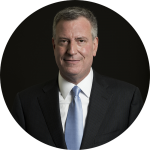
“The proposal we’re announcing today addresses concerns I’ve raised related to a lockbox for transit, fairness to the outer boroughs and accommodating hardships. I still believe a Millionaires Tax provides the best, most sustainable revenue source for the transit improvements our city needs. But the time to act is running out, and among all alternatives, congestion pricing has the greatest prospects for immediate success. In light of this reality, it is my hope that critics of congestion pricing will join me in acknowledging its necessity,” said de Blasio.
Other parts of the plan include MTA fares for public mass transportation must be controlled in future years through cost containment actions and improved management. The MTA should be able to operate with mass transit fare increases limited to inflationary increases of 2% per year.
The plan also includes the MTA undergoing an independent audit to determine their actual assets and liabilities. The initial audit should be completed no later than January of 2020. The forecasts, projections and capital plans they have put forth strain financial credibility.




